 | Energy Engineering |  |
DOI: 10.32604/ee.2022.022332
ARTICLE
Performance on Power, Hot and Cold Water Generation of a Hybrid Photovoltaic Thermal Module
1Energy Enigineering Program, Department of Mechanical Engineering, Faculty of Engineering, Chiang Mai University, Chiang Mai, 50200, Thailand
2Department of Mechanical Engineering, Faculty of Engineering, Chiang Mai University, Chiang Mai, 50200, Thailand
*Corresponding Author: Attakorn Asanakham. Emails: at.kham88@gmail.com, attakorn.asana@cmu.ac.th
Received: 05 March 2022; Accepted: 13 June 2022
Abstract: This paper proposed a new function of photovoltaic thermal (PVT) module to produce nocturnal cool water not just only generating electrical power and hot water during daytime. Experimental tests were carried out under Chiang Mai tropical climate with a 200 Wp monocrystalline PVT module having dimensions of 1.601 m × 0.828 m connected with two water tanks each of 60 L taken for hot and cool water storages. The module was facing south with 18o inclination. The electrical load was a 200 W halogen lamp. From experiments, by taking the module as a nocturnal radiative cooling surface, the cool water temperature in the cool storage tank could be reduced 2oC–3oC each night and the temperature could be reduced from 31.5oC to 22.1oC within 4 consecutive days. The cool water at approximately 23oC was also used to cool down the PVT module from noon when the PVT module temperature was rather high, and then the module temperature immediately dropped around 5oC and approximately 10% increase of electrical power could be achieved. A set of mathematical models was also developed to predict the PVT module temperature and the hot water temperature including the cool water temperature in the storage tanks during daytime and nighttime. The simulated results agreed well with the experimental data.
Keywords: Photovoltaic thermal module; power generation; hot and cold water production; nocturnal cooling
Nomenclature
| surface area of PVT module, m2 | |
| water specific heat capacity, J⋅kg−1⋅K−1 | |
| D | diameter of riser tube of PVT module, m |
| f | friction factor, dimensionless |
| g | acceleration due to gravity, m⋅s−2 |
| H | vertical distance between inlet and outlet of the module, m |
| heat transfer coefficient at top surface of module, W⋅m−2⋅K−1 | |
| solar radiation incidence on PVT module, W⋅m−2 | |
| K | loss coefficient, dimensionless |
| l | riser tube length, m |
| water mass in storage tank, kg | |
| water mass flow rate, kg⋅s−1 | |
| n | number of data |
| number of riser tubes of PVT module | |
| ΔP | pressure drop, Pa |
| ambient temperature, K | |
| module temperature in the nighttime, K | |
| module temperature in the daytime, K | |
| sky temperature, K | |
| water temperature in cool water tank at time | |
| water temperature in cool water tank at time | |
| inlet water temperature in the nighttime, K | |
| outlet water temperature in the nighttime, K | |
| module outlet water temperature, K | |
| module inlet water temperature, K | |
| water temperature in hot water tank at time | |
| water temperature in hot water tank at time | |
| overall heat loss coefficient from module to surrounding, W⋅m−2⋅K−1 | |
| overall heat transfer coefficient and area product between module and circulating water, W⋅K−1 | |
| x | simulated and experimental values |
| pumping power, W | |
| emittance of module surface | |
| Stefan Boltzmann’s constant, W⋅m−2⋅K−4 | |
| ρ | density, kg⋅m−3 |
| η | efficiency, % |
At present, photovoltaic (PV) module has been widely used to generate electrical power for many uses, as for air-conditioning, lighting and other applications, and then the electrical power from the grid-line could be reduced drastically. In Thailand, the number of the installed PV module was booming due to its low cost and the Government policy on green and sustainable energy. In some cases, for example, use of PV-air conditioner might reduce over 75% of grid electrical power for air-conditioning in office building during daytime [1–3]. However, in hot country such as Thailand, the PV module temperature might reach 70oC or more in the afternoon then the electrical efficiency was reduced significantly and only 75% or less of the power at standard condition could be generated [4–7], then many approaches to control the module temperature were presented. Sun et al. [8] and Biwole et al. [9,10] used phase change material (PCM) such as paraffin embedded at the rear surface of PV module and the module temperature was controlled and approaching to the PCM melting point during daytime. Asanakham et al. [11] and Teo et al. [12] used air forced convection at the rear surface of PV module to cool down the module temperature during daytime. Asanakham et al. [13] and Zhe et al. [14] investigated effect of water cooling through a set of water tubes or channels attached at the PV module rear surface on temperature control of PV module. However, if the working fluid was not used for other thermal applications, and since the active method consumed electrical energy to supply the air blower or water pump, then the net generated energy output might not be higher than that of the normal unit. Recently, thermoelectric generator (TEC) was conducted to increase the electricity generation or extend the electricity generation at night. Wen et al. [15] considered performance of a PVT module with PCM connected in series to a solar thermal collector (ST) with a set of thermoelectric generators (TEGs) at the ST rear surface. The ST increased the temperature of water stream exiting the PVT module while the TEGs were used to generate more electricity from the ST surface temperature. The PCM at the rear surface of the PVT module was used to reduce the PVT module temperature. Ebrahimi et al. [16] also used TEG combined with PVT-water storage tank. The TEG could extend electricity generation from the stored hot water in the storage tank during nighttime.
Designs of photovoltaic thermal (PVT) module to generate simultaneous electricity and heat as hot water or hot air had been presented then the overall efficiency of the module was higher than that of the ordinary PV module [17–20]. Generally, the PVT module performance was considered only for heat and electricity generation during the daytime and from our preliminary test, the PVT module temperature was found to be lower than the surrounding temperature in the nighttime so the module could be taken as a thermal radiator for generating nocturnal cool water similar to a thermal nocturnal radiator designed by Chotivisarut et al. [21]. The thermal radiator was a metal sheet attached with a set of thermosyphon heat pipes of which the evaporator part was dipped into a water tank. During nighttime, the heat pipes extracted heat from the water storage tank and the heat was rejected via the thermal radiator to the night sky then the temperature of water kept in the storage tank could be reduced and the cool water could be used for space cooling during daytime. Hu et al. [22] also showed that there was a high potential to reduce the PVT module temperature by nocturnal radiative cooling. A set of energy balance equations of PVT module components was developed and it could be found that the module temperature could be dropped down to nearly 9.5oC below the surrounding air temperature in the nighttime under Hefei, China weather data. Zaite et al. [23] presented dynamic thermal behavior of a PVT water-based module based on energy balances of its components under the hot arid climate of Ouarzazate, a city in Morrocco. The temperature of water in a 200 L water storage tank having initial temperature of 20oC could be reduced to 11.5oC–13oC during nighttime. The nocturnal cool water was used to cool down the PVT module temperature during daytime and the daily temperature could be 3◦C–5◦C reduction compared with that of the normal PVT module. The monthly gain of electrical energy could also be improved by 5.5%–6.15%. Péan et al. [24] experimentally studied on cooling performance by nighttime radiative cooling of three PVT modules in series connection under Scandinavian climate during summer. The cooling capacity per unit area was in a range of 20–75 W⋅m−2 which was possible for cooling in office and residential building.
Not many papers have presented the use of PVT for generating cool water during nighttime especially experimental studies and most of them are performed in hot and arid, or middle to high latitude regions, where the nighttime ambient temperature is rather cold and the night sky is clear.
In this paper, a potential of nocturnal cooling for generating cool water via PVT module under Chiang Mai climate which was hot and humid was carried out. A use of generated cool water to cool down the PVT module temperature at high temperature during daytime to enhance electrical performance was also investigated. In addition, a set of simplified models for evaluating the PVT module performance on electricity and hot water generation during daytime and cool water production during nighttime was developed and the results from the models were verified with the experimental data.
2 Experimental Setup and Mathematical Models
A 200 Wp monocrystalline PVT module was connected to two water storage tanks each of 60 L for keeping generated hot and cool water during daytime and nighttime, respectively. During daytime, the PVT module not only generated electricity to an electrical load which was a 200 W halogen lamp, but also acted as a solar collector to supply heat to the water kept in the hot water tank. During nighttime, the PVT module was a thermal radiator exchanging heat with the night sky and the surrounding ambient. As the thermal radiation exchange with the night sky was higher than the heat convection from the surrounding air then the module temperature could be reduced and nocturnal cool water could be produced. A 28 W pump with bypass flow was used to circulate water in the system. The module temperatures, the water temperatures at the PVT inlet and outlet, the water in the storage tank, and the ambient temperatures were recorded by a set of T-type thermocouples with Huato datalogger. The experimental setup and the positions of the temperature measurements were illustrated in Fig. 1. The PVT module was tested outdoor under the climate of Chiang Mai, Thailand (Latitude 18.79° N, Longitude 98.96° E). The unit was south facing with 18o inclination. The solar radiation on the PVT plane was recorded by a Kipp and Zonen CMP3 pyranometer. The volume flowrate was observed directly by a calibrated rotameter. The electrical power from the PVT module was measured by a UNI-T UT204 multimeter. The instrument accuracies were shown in Table 1.
Figure 1: Experimental setup and the positions of temperature measurement

Electrical performance of the tested PVT module in term of the generated electrical power related with the module temperature and the incident solar radiation in cold and hot seasons of Chiang Mai, Thailand could be shown in Fig. 2.

Figure 2: Performance of the tested PVT module on the power generation related to the module temperature and the solar radiation
From Fig. 2, the correlation equation of the related parameters could be given by
200 ≤ IT ≤ 1,000 W⋅m−2; 30 < Tm < 60oC.
Since there is parasitic work due to water circulation in the system, therefore, the pumping power (
H is the vertical distance between inlet and outlet of the module, K1 and K2 are loss coefficients at the inlet and the outlet of the PVT module which are considered to be 0.5 and 1, respectively [25], f is the friction coefficient which is calculated from 64/Re (laminar regime) [26], D is the diameter of each riser tube in PVT module and l is the tube length.
Therefore, the net electrical power efficiency could be calculated from
In this study, with the flowrate of 0.018 kg⋅s−1, and pump efficiency, ηpump, of 80%, the pumping power (
2.2.2 Daytime Hot Water Production
The PVT module was connected to a 60 L hot water storage tank and generated hot water during daytime similar to a normal solar collector. The schematic diagram of the tested unit was shown in Fig. 3. The circulating water between the module and the storage tank was 0.018 kg⋅s−1. The PVT module generated electricity to the load and at the same time, the unit acted as a solar collector that generated heat to the working fluid in the storage tank. The test was performed in the daytime between 9 am–4.30 pm.
The energy balance in numerical form for the water storage tank with adiabatic and well mixed assumptions was
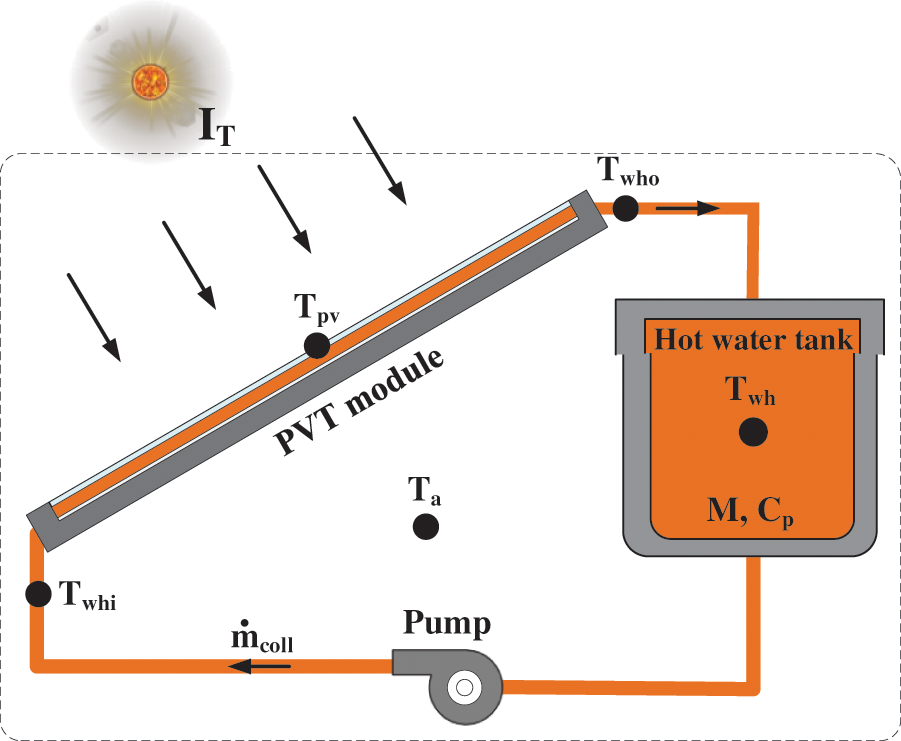
Figure 3: Control volume for hot water production during daytime
The inlet water temperature was assumed as the water temperature in the hot water storage and then from Eq. (5), it could be
The outlet water temperature from the module could also be calculated by
Eq. (7) could be rewritten as
Since the water circulating through the PVT module extracted solar heat from the PVT module surface similar to heat transfer in a heat exchanger. The outlet water temperature
where
2.2.3 Nocturnal Cool Water Production
In the nighttime, cool water in the cool storage tank was circulated through the PVT module and there was heat radiation rate from the front surface of the module to the sky,
The energy balance at the storage tank as described in Fig. 5 (nighttime) could be performed as
With assumptions that the storage tank was well mixed and well-insulated including
The inlet cool water of PVT module can be calculated by
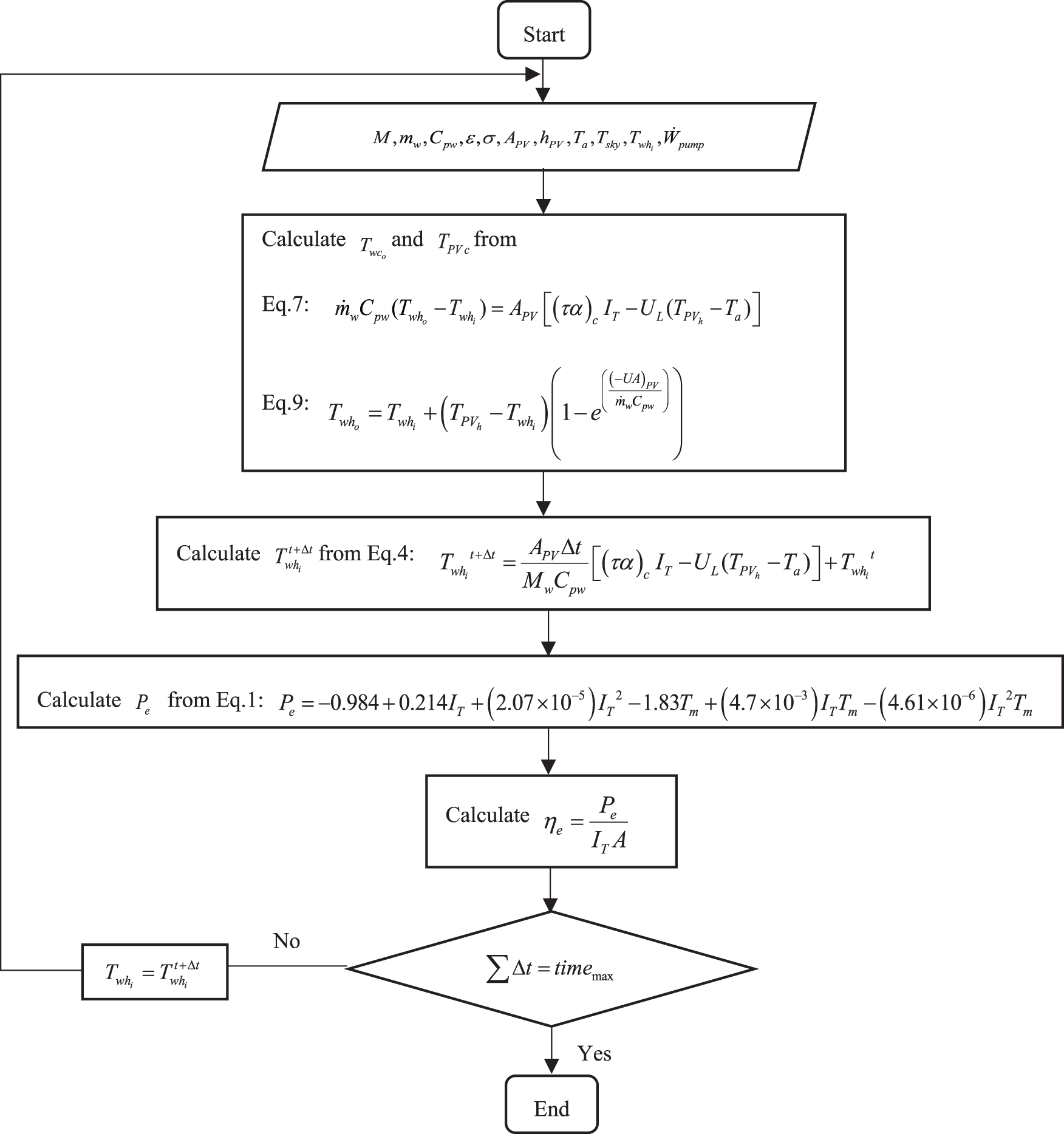
Figure 4: Calculation step for hot water production and electrical power generation in the daytime
The outlet water temperature could be calculated by
where
The wind speed on the top surface of PVT module, v, was taken to be 1.4 m⋅s−1 similar to the average wind speed of Chiang Mai, Thailand and the convective heat transfer coefficient can be found as [29]
where
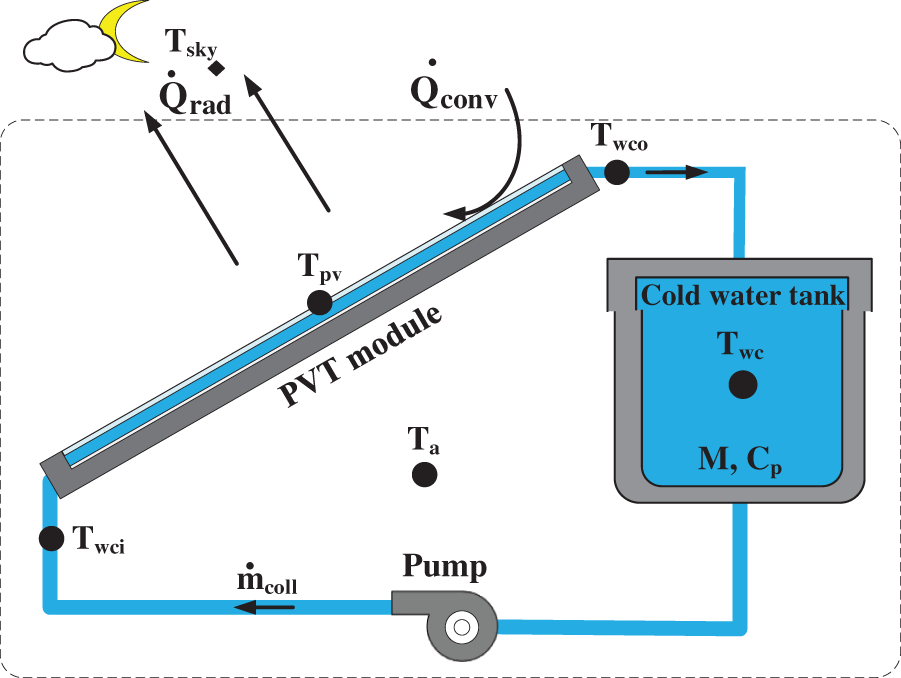
Figure 5: Control volume of PVT module and storage tank for cool water production in the nighttime
Since there is a heat exchanging between the module surface to the cool water circulating in the ducts at the rear surface of the module, the outlet water temperature could also be calculated by [28]
The term
At any value of
2.2.4 Uncertainty of the Experiment
From the accuracies of all the instruments, the uncertainty of each output could be evaluated by [31]
where R is the output,
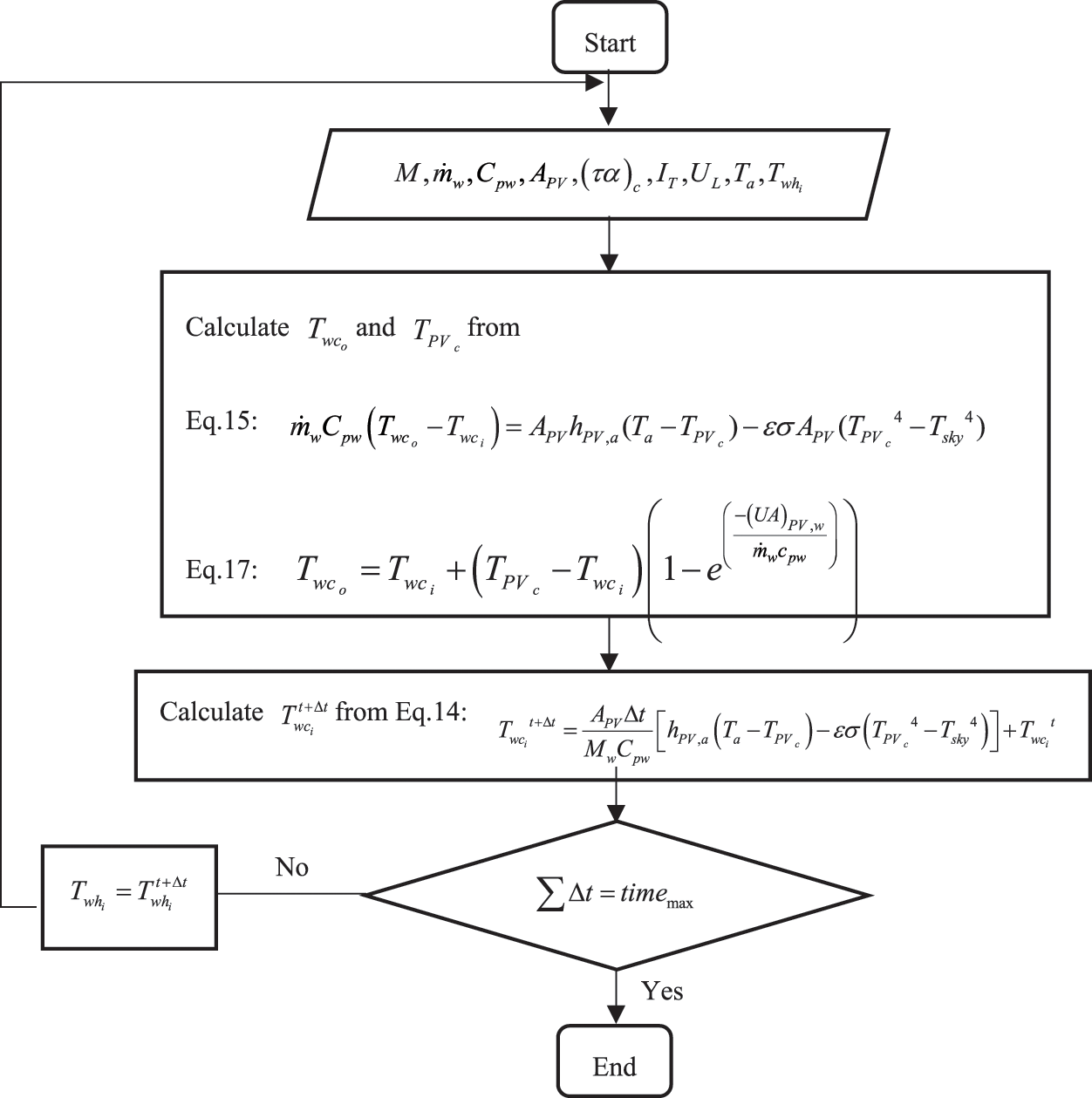
Figure 6: Calculation step for cool water production of PVT module in the nighttime
To characterize the difference between experimental and simulation results, the root-mean-square deviation (RMSD) method is employed [22] as
where xsim,i and xexp,i are respectively the simulated and experimental values; n denotes the number of measurements.
3.1 Electricity Generation and hot Water Production during Daytime
Figs. 7–9 showed the experimental results of the generated electrical power, the temperatures of PVT module and hot water in the storage tank including the electrical efficiency on a clear sky day when the water circulating flow rate in the PVT module was at 0.018 kg⋅s−1. The PVT module temperature followed the value of the solar radiation level and reached maximum value around noon at 60oC and the generated electrical power was about 159 W which was less than that at standard condition. It could be seen that at this condition, the electrical efficiency of the PVT module dropped to be about 10% due to its high module temperature. For hot water temperature in the storage tank, the value was increased from approximately 30oC to the maximum one around 50oC in late afternoon. It could be noted that the simulated results on the PVT module temperature, the generated electrical power and the hot water temperature in the storage tank agreed well with the experimental data. The RMSDs for the PVT module temperature, hot water temperature and generated power were less than 3.5%, 4%, and 10%, respectively.
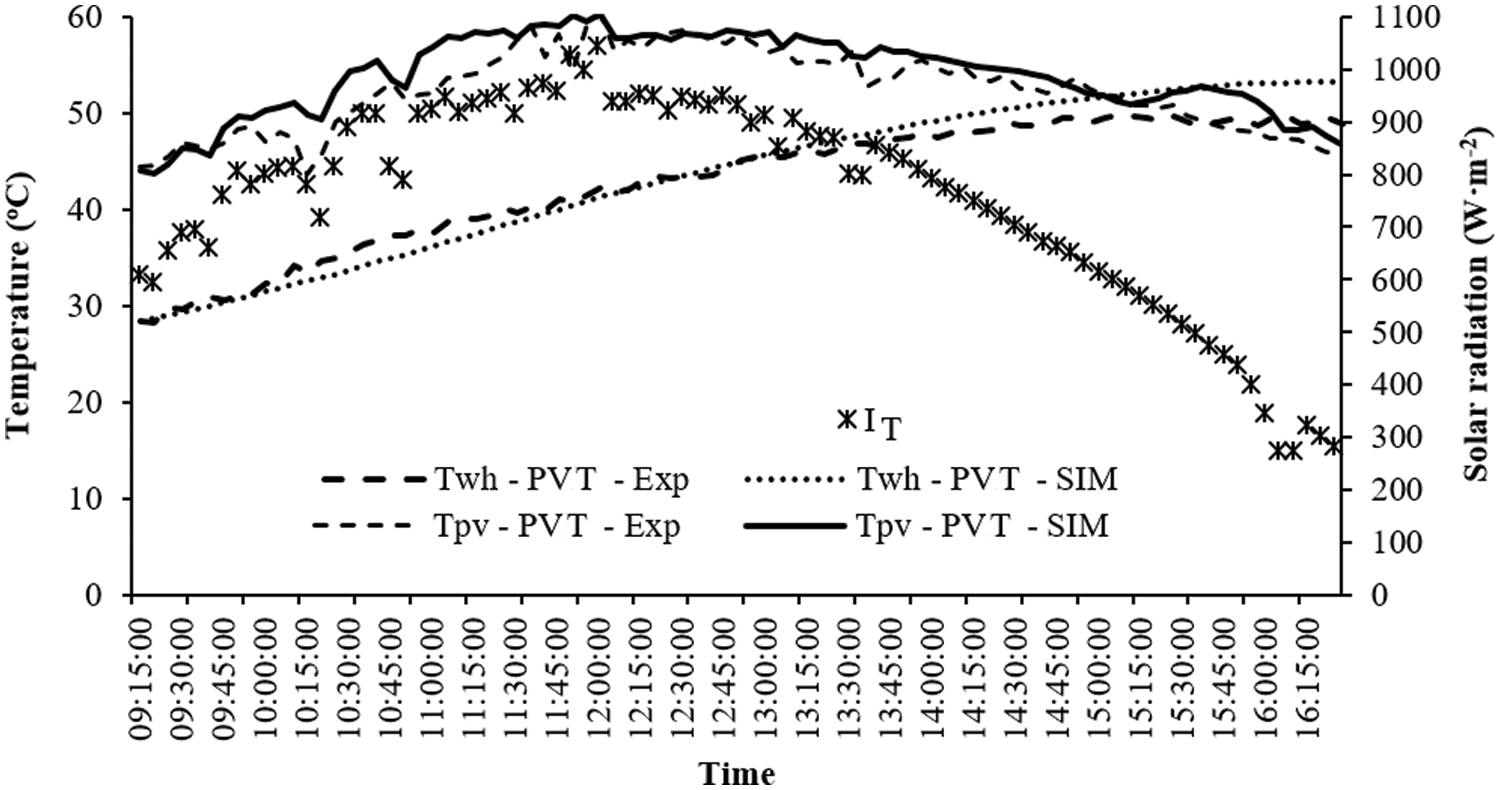
Figure 7: Hot water temperature in hot water storage tank on a clear sky day
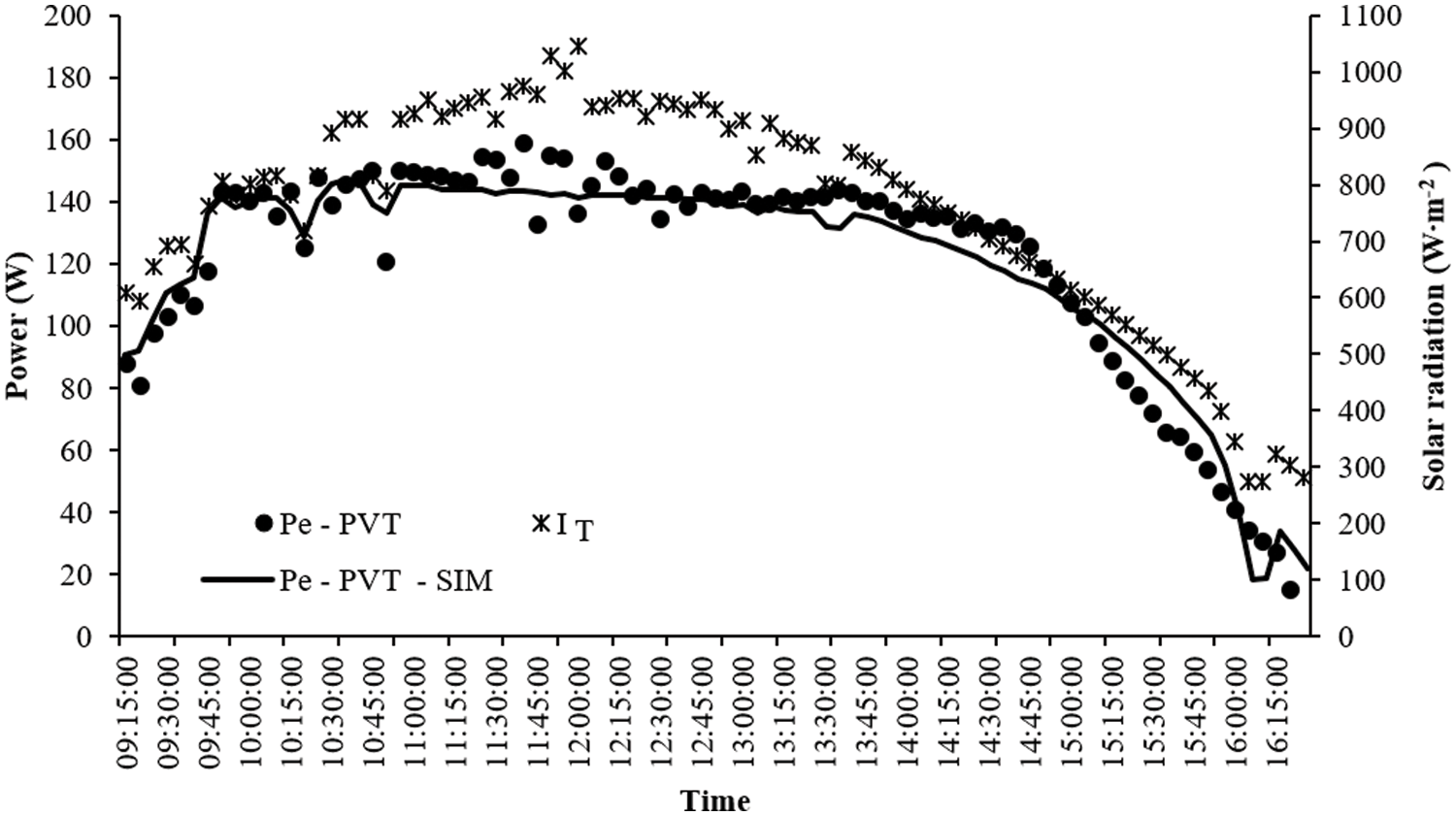
Figure 8: Power generation of PVT module in the daytime on a clear sky day
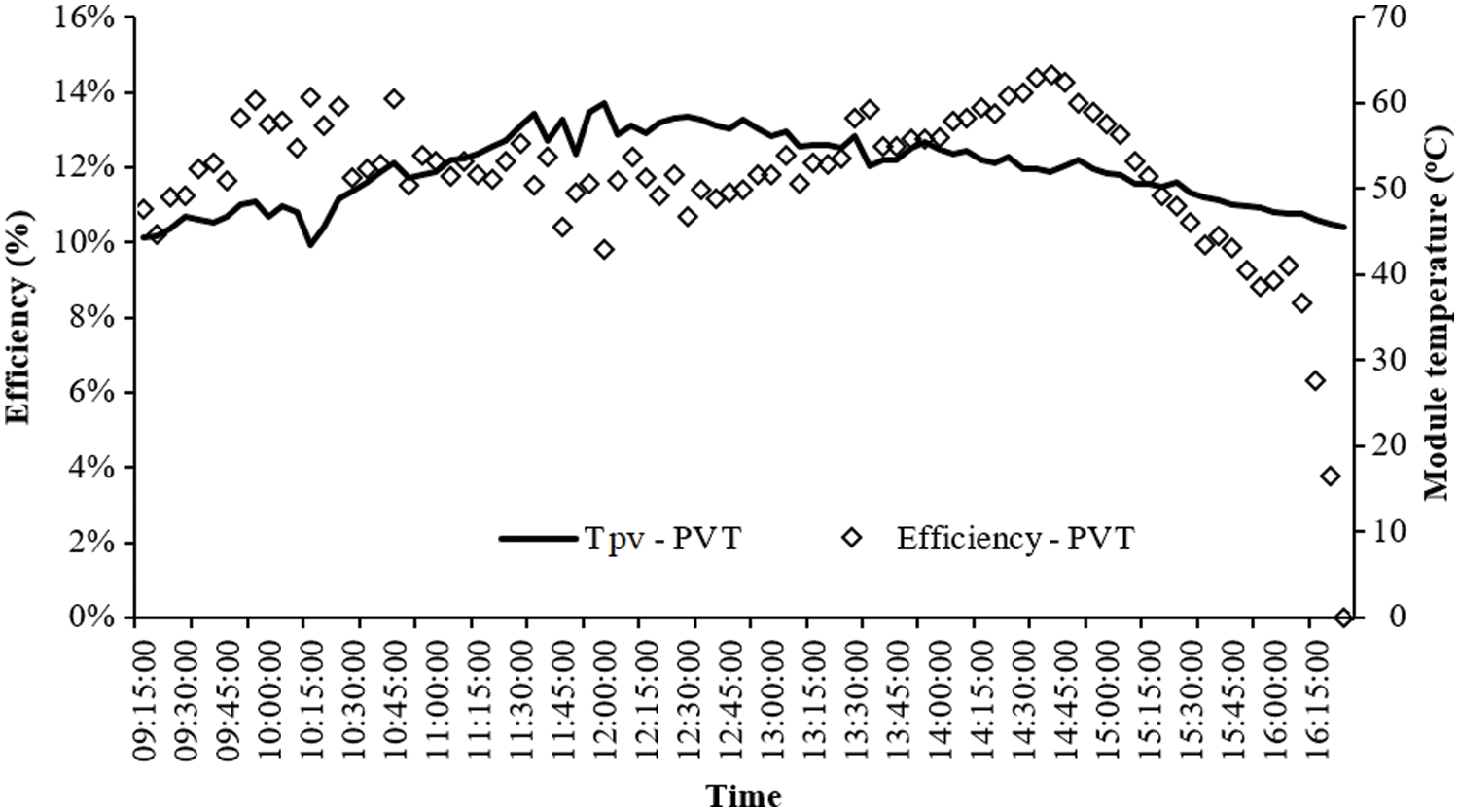
Figure 9: PVT module efficiency during daytime at flow rate of 0.018 kg⋅s−1
3.2 Cool Water Production during Nighttime
Fig. 10 showed the experiment results of cool water production via PVT module in the night time. The circulating water flow rate in the PVT module was 0.018 kg⋅s−1. It was found that the PVT module temperature could be lower than that of the surrounding ambient due to the higher radiative heat transfer from the PVT module to the sky than the heat convection from the surrounding air. The cool water temperature in the cool storage tank could be reduced approximately 2oC–3oC each night and the temperature could be reduced from 31.5oC to 22.1oC within 4 consecutive days. The temperature reduction was rather low compared with that of Zaite et al. [23] where the tests were performed in hot and arid climate. It was also noted that the simulated results of the cool water temperature fitted very well with the experimental data. The RMSD was less than 2%.

Figure 10: Temperature histories of module temperature and water temperature in storage tank in 4 consecutive days
3.3 Use of Nocturnal Water for PVT Module Cooling
From Fig. 11, the generated electrical power initially increased with the solar radiation level and after 10 a.m. the trend slightly declined due to high module temperature as shown in Fig. 12. Around noon, the module temperature was rather high then a test on the use of generated cool water in the storage tank to cool down the PVT module was carried out. The cool water at around 23oC with a flow rate of 0.018 kg⋅s−1 was fed to the PVT module and the module temperature dropped rapidly from around 55oC to 50oC. The temperature reduction was also within the same range of the simulated result performed by Zaite et al. [23]. The generated power and the electrical efficiency could be up from 136.9 W to 150.1 W and 11% to 12%, respectively. By the simulation, the increase of electrical energy with nocturnal water cooling was approximately 38 Wh compared with the normal PVT while the energy consumption for circulating water during nocturnal cooling was approximately 3 Wh/night (theoretical pumping power at 0.34 W and the operating hours of 11 h/night). It could be noted that there was a high potential to use nocturnal cool water for PVT cooling during daytime. However, in real practice, the pumping power was higher than the theoretical value, then the pump sizing should be carefully considered to get positive net electrical energy output after PVT cooling in the daytime.

Figure 11: Power generation of PVT module of PVT module during daytime with cool water feeding and flow rate of 0.018 kg⋅s−1
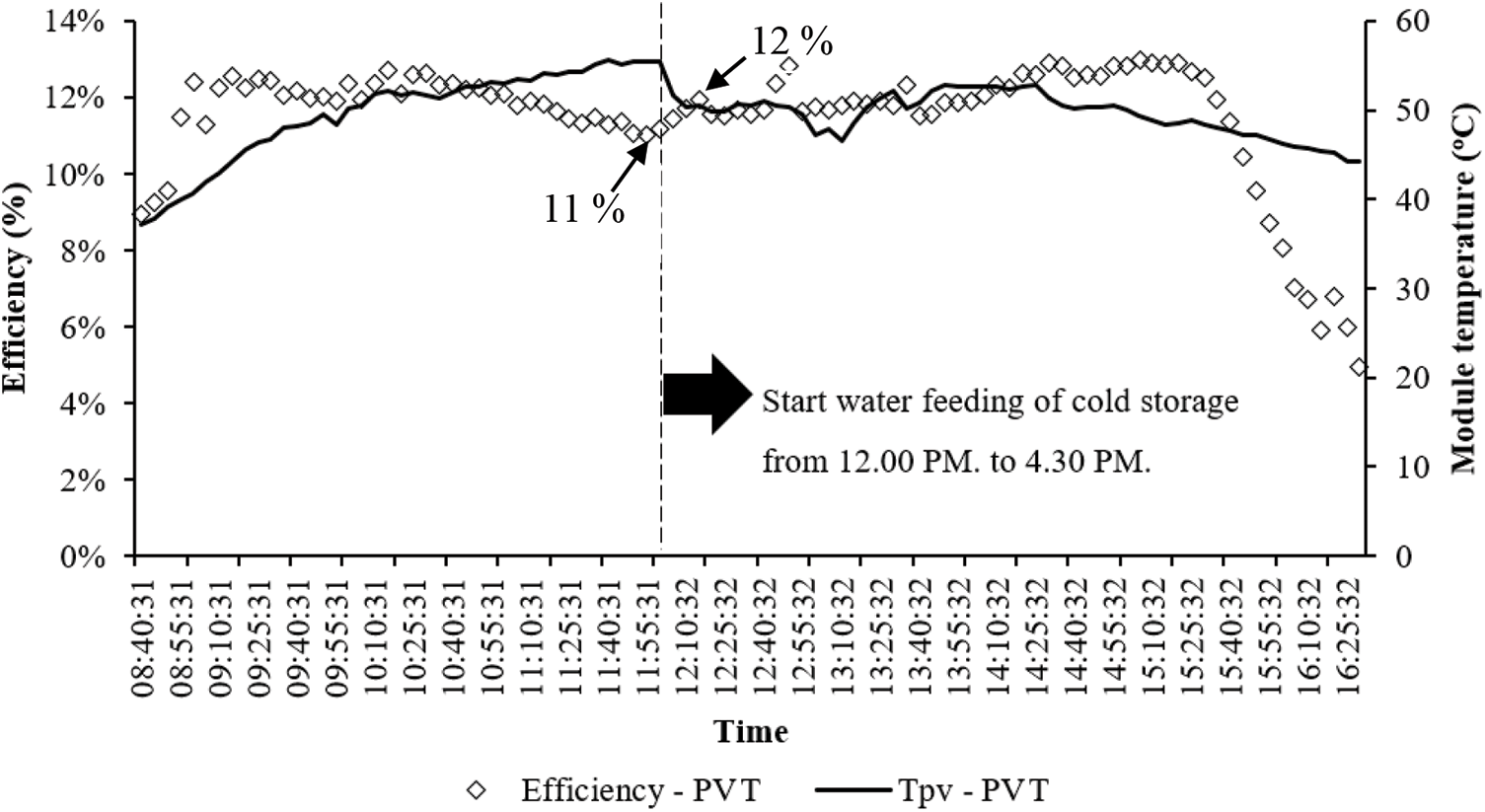
Figure 12: PVT module efficiency during daytime with cool water feeding and flow rate of 0.018 kg⋅s−1
It could be noted that the cool water after cooling down the PVT module and returning back to the storage tank (Storage tank 2), the water temperature in the storage tank at the end of the daytime could reach around 40oC which was high enough for bathing or washing as shown in Fig. 13. After that the new amount of water was replaced and the new cycle for nocturnal cooling could be performed.
From the study, it could be found that there is a high potential to generate cool water during nighttime even the area is in tropical climate. The temperature of water volume at 60 L could be reduced approximately 2oC–3oC each night via a PVT module having dimensions of 828 mm × 1,601 mm. and the temperature could be reduced from 31.5oC to 22.1oC within 4 consecutive days. With a big number of PVT modules such as solar farm, high amount of cool water could be generated and used for PVT cooling when the module temperature is high to enhance the power efficiency or for space cooling in that area during daytime.
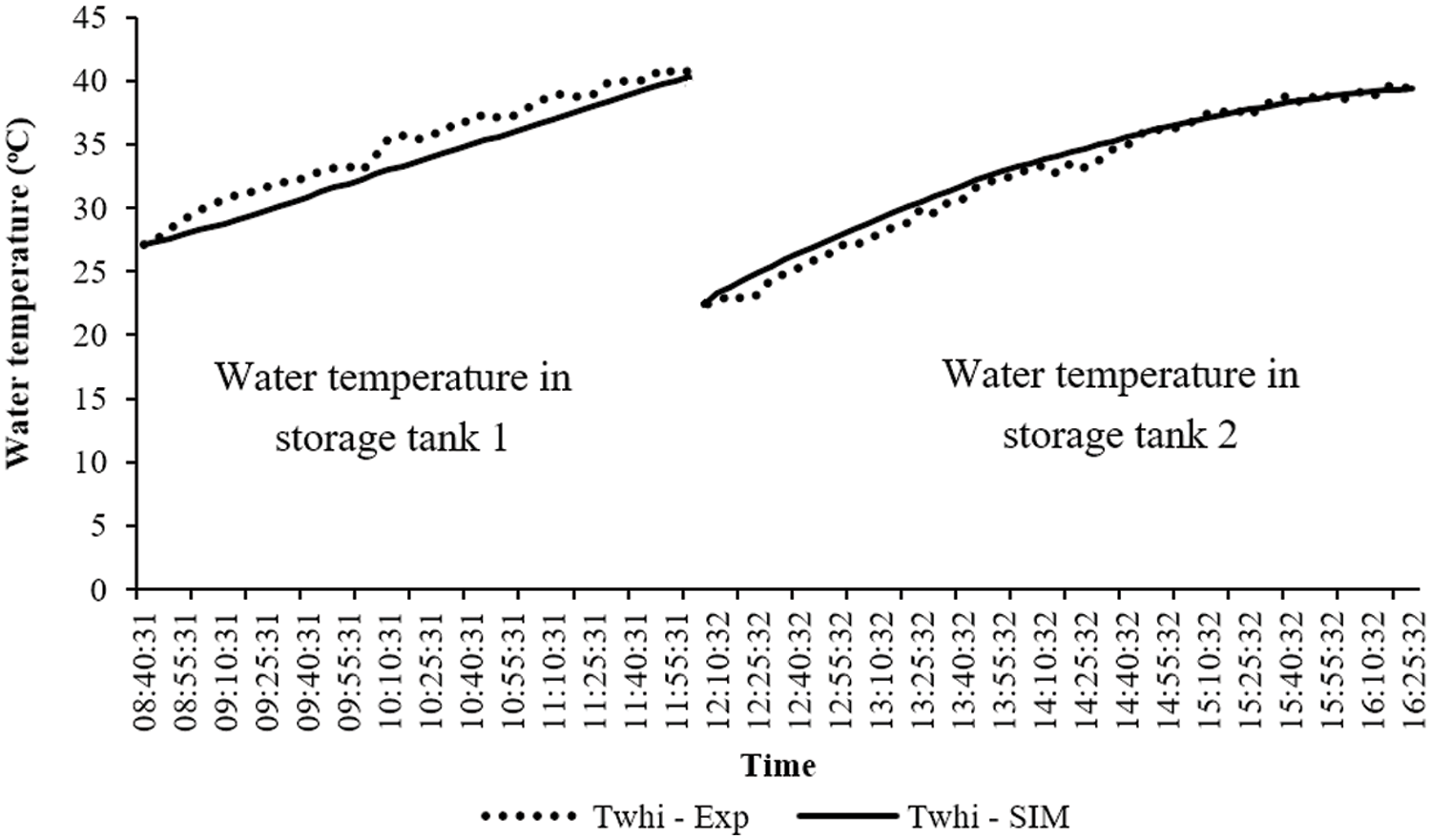
Figure 13: Water temperatures in hot water storage and cool water storage
A study on nocturnal cool water production as a new function of PVT module was carried out both experimentally and theoretically. The findings of this paper are as follows:
• The PVT module not only generated electrical power and hot water generation during daytime but also produced cool water during nighttime. In the tropical climate area such as Chiang Mai, from the experiment, the temperature of 60 L of water in a storage tank could be reduced approximately 2oC–3oC each night via the PVT module having dimensions of 828 mm × 1,601 mm.
• A set of models for predicting PVT module temperature and generated electrical power including hot and cool water storage temperatures was developed and the simulated results agreed well with the experimental data. The RMSDs for the nocturnal water temperature, PVT module temperature, hot water temperature and generated power were less than 2%, 3.5%, 4%, and 10%, respectively.
• There was a high potential to use generated nocturnal cool water in the storage tank to cool down the PVT module when the unit temperature was high which resulted in higher generated electrical power and electrical efficiency.
• This concept could be applied in the case of solar farm with high number of PVT modules for generating high amount of nocturnal cool water that can be used for space cooling during daytime.
Acknowledgement: The authors would like to acknowledge the supports from the Department of Mechanical Engineering, Faculty of Engineering and Research Group for Renewable Energy, Chiang Mai University.
Funding Statement: The authors received no specific funding for this study.
Conflicts of Interest: The authors declare that they have no conflicts of interest to report regarding the present study.
References
1. Hussein, H. A., Numan, A. H., Kuder, K. M. (2020). Solar photovoltaic direct-driven air conditioning system performance in Iraq. University of Technology-Iraq, 38(7), 984–991. DOI 10.30684/ETJ.V38I7A.477. [Google Scholar] [CrossRef]
2. Esmaeel Nezhad, A., Rahimnejad, A., Gadsden, S. A. (2021). Home energy management system for smart buildings with inverter-based air conditioning system. International Journal of Electrical Power & Energy Systems, 133, 107230. DOI 10.1016/J.IJEPES.2021.107230. [Google Scholar] [CrossRef]
3. Albatayneh, A., Jaradat, M., Al-Omary, M., Zaquot, M. (2021). Evaluation of coupling PV and air conditioning vs. solar cooling systems—Case study from Jordan. Applied Sciences, 11(2), 511. DOI 10.3390/APP11020511. [Google Scholar] [CrossRef]
4. Ali, S., Khan, I., Jan, S., Hafeez, G. (2021). An optimization based power usage scheduling strategy using photovoltaic-battery system for demand-side management in smart grid. Energies, 14(8), 2201. DOI 10.3390/EN14082201. [Google Scholar] [CrossRef]
5. Aguilar, F. J., Ruiz, J., Lucas, M., Vicente, P. G. (2021). Performance analysis and optimisation of a solar on-grid air conditioner. Energies, 14(23), 8054. DOI 10.3390/EN14238054. [Google Scholar] [CrossRef]
6. Fachrizal, R., Munkhammar, J. (2020). Improved photovoltaic self-consumption in residential buildings with distributed and centralized smart charging of electric vehicles. Energies, 13(5), 1153. DOI 10.3390/EN13051153. [Google Scholar] [CrossRef]
7. Beppler, R. C., Matisoff, D. C., Oliver, M. E. (2021). Electricity consumption changes following solar adoption: Testing for a solar rebound. Economic Inquiry. DOI 10.1111/ECIN.13031. [Google Scholar] [CrossRef]
8. Sun, V., Asanakham, A., Deethayat, T., Kiatsiriroat, T. (2020). Study on phase change material and its appropriate thickness for controlling solar cell module temperature. International Journal of Ambient Energy, 41(1), 64–73. DOI 10.1080/01430750.2018.1443500. [Google Scholar] [CrossRef]
9. Biwole, P., Eclache, P., Kuznik, F. (2011). Improving the performance of solar panels by the use of phase-change materials. Proceedings of the World Renewable Energy Congress, vol. 57, pp. 2953–2960. Linköping, Sweden, Linköping University Electronic Press. DOI 10.3384/ECP110572953. [Google Scholar] [CrossRef]
10. Biwole, P. H., Eclache, P., Kuznik, F. (2013). Phase-change materials to improve solar panel’s performance. Energy and Buildings, 62, 59–67. DOI 10.1016/j.enbuild.2013.02.059. [Google Scholar] [CrossRef]
11. Asanakham, A., Kantiya, I., Kiatsiriroat, T. (2015). Performance prediction of poly-crystalline solar cell module under real practice. Engineering Journal of Chiang Mai University, 22(3), 87–93. [Google Scholar]
12. Teo, H. G., Lee, P. S., Hawlader, M. N. A. (2012). An active cooling system for photovoltaic modules. Applied Energy, 90(1), 309–315. DOI 10.1016/j.apenergy.2011.01.017. [Google Scholar] [CrossRef]
13. Asanakham, A., Deethayat, T. (2020). Performance analysis of PV/T modules with and without glass cover and effect of mass flow rate on electricity and hot water generation. Energy Reports, 6, 558–564. DOI 10.1016/J.EGYR.2019.11.119. [Google Scholar] [CrossRef]
14. Wai, Z,L, Irwan Yusoff, M., Abd Razak, A., Irwanto Misrun, M., Ibrahim, S. et al. (2019). Effect of water cooling temperature on photovoltaic panel performance by using computational fluid dynamics (CFD). Journal of Advanced Research in Fluid Mechanics and Thermal Sciences, 56, 133–146. [Google Scholar]
15. Wen, X., Ji, J., Li, Z., Song, Z. (2022). Performance analysis of a concentrated system with series photovoltaic/thermal module and solar thermal collector integrated with PCM and TEG. Energy, 249. DOI 10.1016/j.energy.2022.123777. [Google Scholar] [CrossRef]
16. Ebrahimi, M., Ahmadi, M. A., Khalife, E. (2022). Multi-criteria evaluation, and dynamic modeling of combining thermal photovoltaic and thermoelectric generators to extend electricity generation at night. Journal of Cleaner Production, 344(2–3). DOI 10.1016/j.jclepro.2022.131107. [Google Scholar] [CrossRef]
17. Charalambous, P. G., Maidment, G. G., Kalogirou, S. A., Yiakoumetti, K. (2007). Photovoltaic thermal (PV/T) collectors. Applied Thermal Engineering, 27(2–3), 275–286. DOI 10.1016/J.APPLTHERMALENG.2006.06.007. [Google Scholar] [CrossRef]
18. Bergene, T., Løvvik, O. M. (1995). Model calculations on a flat-plate solar heat collector with integrated solar cells. Solar Energy, 55(6), 453–462. DOI 10.1016/0038-092X(95)00072-Y. [Google Scholar] [CrossRef]
19. Kalogirou, A. S. (2001). Use of TRNSYS for modelling and simulation of a hybrid pv–thermal solar system for Cyprus. Renewable Energy, 23(2), 247–260. DOI 10.1016/S0960-1481(00)00176-2. [Google Scholar] [CrossRef]
20. Fujisawa, T., Tani, T. (1997). Annual exergy evaluation on photovoltaic-thermal hybrid collector. Solar Energy Materials and Solar Cells, 47(1–4), 135–148. DOI 10.1016/S0927-0248(97)00034-2. [Google Scholar] [CrossRef]
21. Chotivisarut, N., Kiatsiriroat, T. (2009). Cooling load reduction of building by seasonal nocturnal cooling water from thermosyphon heat pipe radiator. International Journal of Energy Research, 33(12), 1089–1098. DOI 10.1002/ER.1543. [Google Scholar] [CrossRef]
22. Hu, M., Zhao, B., Ao, X., Suhendri, C., Cao, J. et al. (2020). An analytical study of the nocturnal radiative cooling potential of typical photovoltaic/thermal module. Applied Energy, 277. DOI 10.1016/J.APENERGY.2020.115625. [Google Scholar] [CrossRef]
23. Zaite, A., Belouaggadia, N., Abid, C., Ezzine, M. (2021). Performance improvement of photovoltaic cells using radiative cooling technology in a PV/T collector. Journal of Building Engineering, 42, 102843. DOI 10.1016/j.jobe.2021.102843. [Google Scholar] [CrossRef]
24. Péan, T., Gennari, L., Olesen, B. W., Kazanci, O. B. (2015). Nighttime radiative cooling potential of unglazed and PV/T solar collectors: Parametric and experimental analyses. CLIMAMED 2015-The 8th Mediterranean Congress of Heating, Ventilation and Air-Conditioning: Juan-les-Pins, France. [Google Scholar]
25. Fox, R. W., McDonald, A. T., Pritchard, P. J. (2006). Introduction to fluid mechanics, Sixth edition. Hoboken, NJ: John Wiley & Sons. [Google Scholar]
26. Bergman, T. L., Lavine, A. S., Incropera, F. P. (2011). Fundamentals of heat and mass transfer, 7th edition, Hoboken, NJ: John Wiley & Sons. [Google Scholar]
27. Duffie, J. A., Beckman, W. A. (2013). Solar engineering of thermal processes, Fourth edition. Hoboken, NJ: Wiley. [Google Scholar]
28. Stoecker, W. F. (1989). Design of thermal systems, Third edition. Singapore: McGraw-Hill. [Google Scholar]
29. Armstrong, S., Hurley, W. G. (2010). A thermal model for photovoltaic panels under varying atmospheric conditions. Applied Thermal Engineering, 30(11), 1488–1495. DOI 10.1016/j.applthermaleng.010.03.012. [Google Scholar] [CrossRef]
30. Hammami, M., Torretti, S., Grimaccia, F., Grandi, G. (2017). Thermal and performance analysis of a photovoltaic module with an integrated energy storage system. Appled Science, 7(11), 1107. DOI 10.3390/APP7111107. [Google Scholar] [CrossRef]
31. Holman, J. P. (2012). Experimental methods for engineering, eighth. Singapore: McGraw–Hill. [Google Scholar]
 | This work is licensed under a Creative Commons Attribution 4.0 International License, which permits unrestricted use, distribution, and reproduction in any medium, provided the original work is properly cited. |